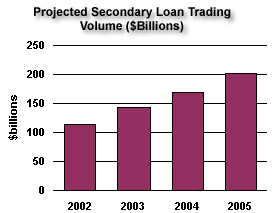Secondary Loan Trading Volumes Set To Soar- LSTA Viewed as Catalyst
Abstract
Celent forecasts that secondary loan trading volumes will exceed $200 billion by 2005, more than 78% higher than last year’s volumes. While not the only driver, LSTA initiatives have been vital in bringing standards, transparency, and greater liquidity to this market.

In a new report entitled The LSTA: Setting the Standard for the Loan Market, Celent analyzes the secondary loan trading market. The report illustrates how the LSTA has had a major impact on not only the way loan trades are handled, but also in serving as a voice for market players and as a public forum for issues to be discussed.
"Secondary loan trading volumes have experienced considerable growth over the last decade, but this market is far from reaching its potential. Volumes will rise further as banks increasingly look to the market to offload assets and as institutional investors show a greater demand for the asset class." said Christine Barry, wholesale banking analyst at Celent and author of the report. "This increase will come despite the overall decrease in commercial lending volumes across all industries."
The main thrust of the LSTA’s objective is two fold: 1) Creating standards in the corporate loan market; and 2) Facilitating communication among major market players. Combined, these two objectives encourage a marketplace where tranparency is the norm and where disputes are resolved in a consistent manner. While the LSTA is not a governing body, it has earned the respect of the industry over the last eight years and has brought standards to an unregulated market.

